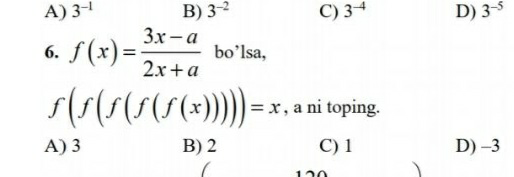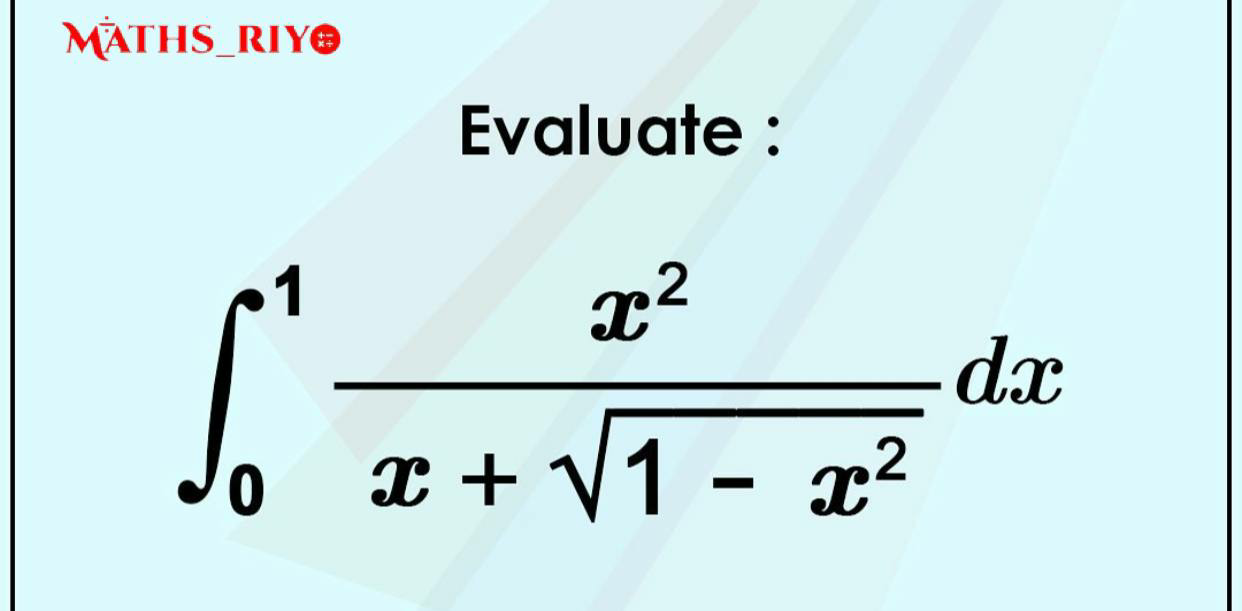
Question and Answers Forum
AllQuestion and Answers: Page 756








Pg 751 Pg 752 Pg 753 Pg 754 Pg 755 Pg 756 Pg 757 Pg 758 Pg 759 Pg 760
|
Question and Answers Forum |
AllQuestion and Answers: Page 756 |

|
| ∫ (dx/(x^4 (√(x^2 −a^2 )))) =? |
| hi ! Simplify : for n ∈ N^∗ , S_n = Σ_(k=1) ^n ((3k+8)/(k(k+2)2^k )) . |
| ......advanced ........... calculus...... prove that:: 𝛗=∫_0 ^( 1) ((ln(1+x^2 ).arctan(x))/x^2 )dx= proof::: 𝛗=_(⟨substitution⟩) ^(x=tan(θ)) ∫_0 ^( (π/4)) ((ln(1+tan^2 (θ)).θ)/(tan^2 (θ)))(1+tan^2 (θ))dθ =^(⟨simplification⟩) ∫_0 ^( (π/4)) ((θ.ln((1/(cos^2 (θ)))))/(sin^2 (θ)))dθ =−2∫_0 ^( (π/4)) ((θ.ln(cos(θ))/(sin^2 (θ)))dθ =^(i.b.p) 2{[(cot(θ).θ.ln(cos(θ))]_0 ^(π/4) −∫_0 ^( (π/4)) (cot(θ).[ln(cos(θ))−θ.tan(θ)]dθ =2.(π/4).ln(((√2)/2))−2∫_0 ^( (π/4)) cot(θ).ln(cos(θ))dθ+2∫_0 ^( (π/4)) θdθ =((−π)/4)ln(2)−Φ+(π^2 /(16)) Φ=∫_0 ^( (π/4)) ((cos(θ))/(sin(θ))).ln(1−sin^2 (θ))dθ =^(sin(θ)=y) ∫_0 ^( ((√2)/2)) ((ln(1−y^2 ))/y)dy=−∫_0 ^( ((√2)/2)) Σ_(n=1) ^∞ (y^(2n−1) /n)dy =−Σ[(y^(2n) /(2n^2 ))]_0 ^( ((√2)/2)) =((−1)/2) li_2 ((1/2)) =((−1)/2){(π^2 /(12))−(1/2)ln^2 (2)}=((−π^2 )/(24))+(1/4)ln^2 (2)... ∴ 𝛗=((−π)/4)ln(2)+(π^2 /(24))+(1/4)ln^2 (2)+(π^2 /(16)) ......... 𝛗 =((5π^2 )/(48))−((12π)/(48))ln(2)+((12)/(48)) ln^2 (2) ..... ........𝛗=(1/(48)){5π^2 −12πln(2)+12ln^2 (2)} |
| x^(x+4) =32 solution method? |

|
| calculate ∫_0 ^∞ ∫_0 ^∞ e^(−x^2 −y^2 ) sin(x^2 +y^2 )dxdy |
| 1)calculate U_n =∫∫_([(1/n),1]^2 ) (2x+3y)(√(x^2 +y^2 ))dxdy 2)find ∫∫_(]0,1]^2 ) (2x+3y)(√(x^2 +y^2 ))dxdy |
| 1) calculate A_n =∫∫_([0,n[^2 ) ((dxdy)/((2x^2 +3y^2 )^2 )) 2)find lim_(n→+∞) A_n |
| (x−1)(dy/dx) +xy = 2xe^(−x) |
| hi ! calculate : ∫∫_A (x^2 −y^2 )dxdy with A={(x^2 /a^2 ) + (y^2 /b^2 ) ≤ 1} |

|
| (x^2 −10x+6)^(x−2) >1 |
| lim_(n→0) ((2^(n+1) +3^(n+2) +4^(n+3) )/(2^n +3^n +4^n )) |
| x^(x+4) =32 |
| prove that (e^(−2y) /(1+e^(−2y) ))<∣tan(z) − i∣<(e^(−2y) /(1−e^(−2y) )) ,y>0 how can solve this ? |
| for p,q∈R satisfying p^4 +q^4 =4pq find the range of p+q when 1) no restriction 2) 0≤p≤1, 0≤q≤1 |

|

|
| .......nice ... ... ... calculus... evaluate ::: 𝚯=Σ_(n=−∞) ^∞ (1/((3n+1)^3 )) =? ......................... |
| Consider the function y=((x^2 +3x+6)/(3x−1)) 1) Determine the intercept of the function 2) Find the asymptotes if they exist 3) find the turning point and determine the type of turnin point they are. 4) sketch the graph of the function. |
| I_n =∫_0 ^( 1) x^n (√(x^2 +1))dx find reduction formula |

|

|
| Three circles each radius 1, touch one another externally and they lie between two parallel line. The minimum possible distance between the lines is _ |

|
Pg 751 Pg 752 Pg 753 Pg 754 Pg 755 Pg 756 Pg 757 Pg 758 Pg 759 Pg 760 |